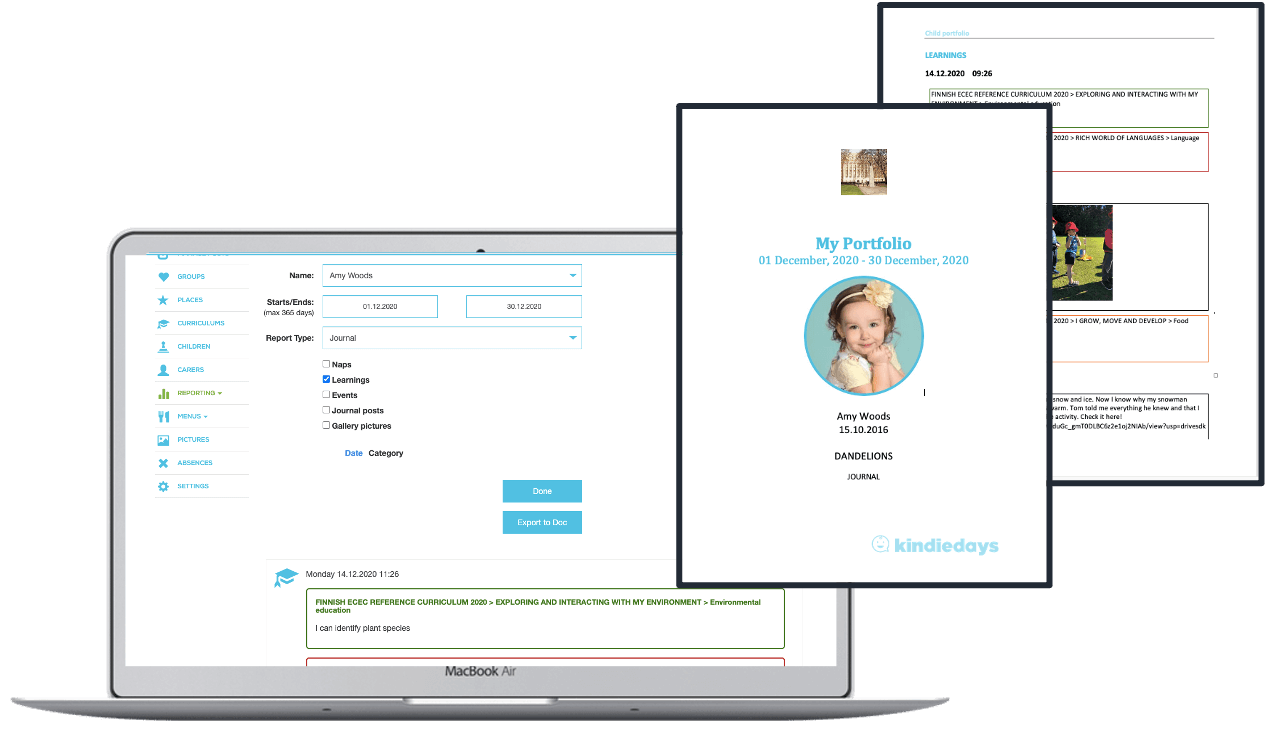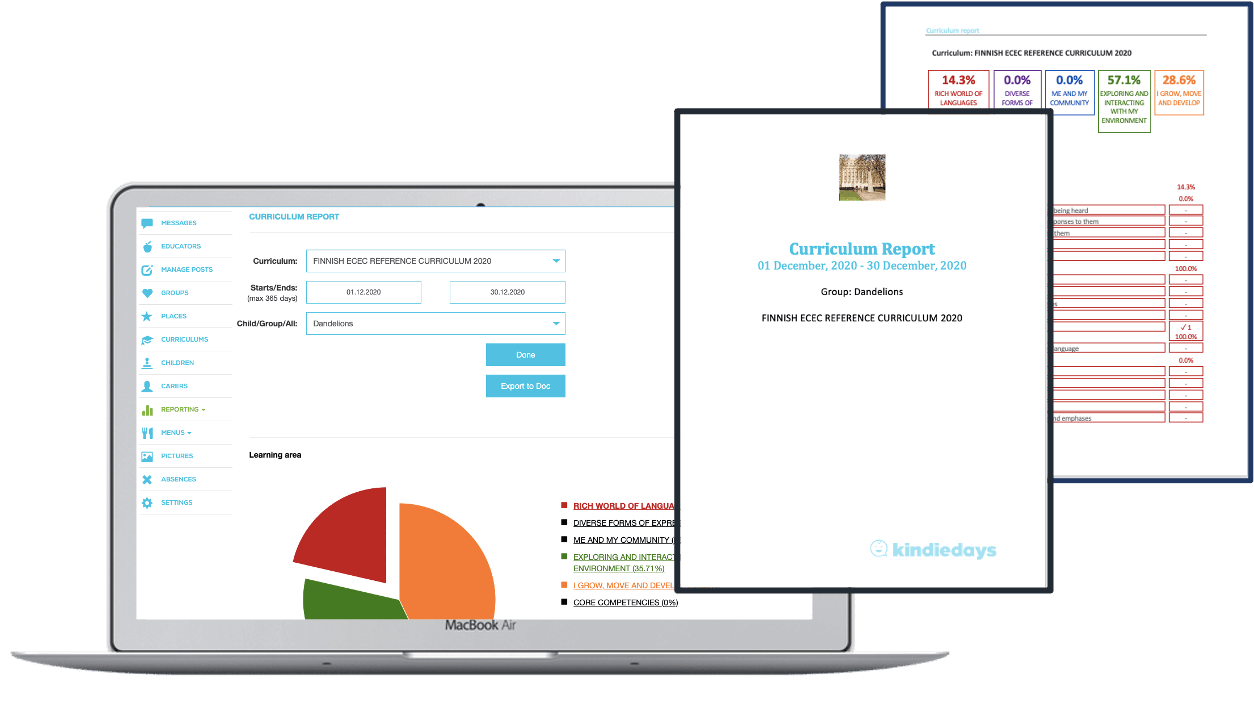
Let’s face it. The better you have planned your day with the children – the better children will learn and you will do your job more efficiently. Surely there are days when things do not go according to the plan, but without a plan and preparations the teacher is like a meteorite floating in the space without a direction.
Planning takes lots of teachers’ time upfront, but with ready made lesson plans created by professionals, you get up to speed in no time. To support children's holistic learning, lesson plans should include activities from all the learning areas. They should also be linked to the curriculum’s learning objectives to secure a consistent pedagogical approach. Then you are well prepared for the children's learning moments.
Kindiedays Lesson Plans - holistic approach towards the whole learning process
Kindiedays has together with Huippu Education designed a package that includes a broad set of lesson plans aligned with the Finnish Curriculum. The lesson plans follow a holistic approach and theme based learning. They are already linked to the learning objectives to help your planning.
Scroll down and get your free sample!
The Kindiedays Lesson Plans package has a card for each activity, over 100 cards in total. These will take you through the year if you use two cards in a week! The themes of the activities are 'Space', 'Ocean' and 'I am Me & I am Special'.
These lesson plans are available as a ready-to-use package for Kindiedays. You save teachers’ planning time and guarantee that your activities are based on the Finnish playful pedagogy!
When you use Kindiedays for making observations of the learning moments, you automatically share the learning with families, collect the learning into the Childs's Portfolio and Learning Reports as well as the center's Curriculum Reports. You really stay on top of the whole learning process! Naturally the Lesson Plans can be freely used together with your curriculum of choice.
How long does one session take?
A session/activity is conducted together with the children and takes 30-45 min. A project consists of two or more sessions, that are closely related with each other. A project allows more in-depth learning of the content.
The card for each activity defines:
- What are the children practicing in the session
- Learning objectives aligned with the Finnish curriculum
- Materials and preparations
- Session steps: Raise interest -> Experiment -> Apply learnings
The lesson plans follow a holistic approach and theme-based learning. Each lesson plan lists which primary learning objectives from the Finnish curriculum the children practice in each session.
The lesson plans are stored in Kindiedays Google Drive, to which you get access for 12 months. You can also copy them to your own archives.
We are really excited about the new Lesson Plans and how nicely they work with the whole Kindiedays learning process, so we want to give you a free sample.
→ Get immediate access to 6 Free Lesson Plans Samples !
I hope you got interested and want to explore the Lesson Plans and how Kindiedays supports the whole leaning process even more. Please check Kindiedays webpage and contact us to know more!
Happy learning!
.png)
.png)
.png)
.png)

.png)



.png)